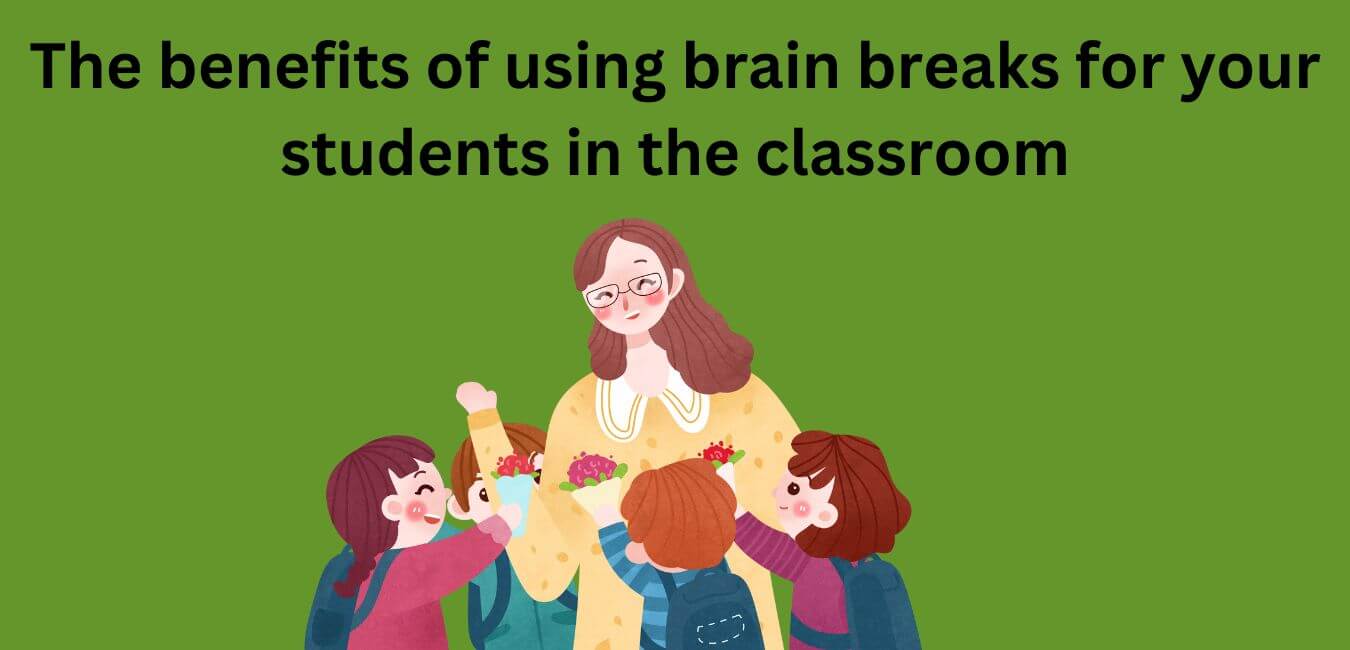Are you a teacher or educator who wants to support a grieving student in your classroom? You’re not alone.
Loss and grief can be difficult for students of any age, and it’s important to provide them with the understanding and care they need during this time.
Here are 14 tips to help you handle a grieving student in your classroom.
Tips to Help You Handle Grieving Students in Your Classroom
1. Recognize and honor the student’s loss
Recognizing a student’s loss in the classroom can be difficult. It is important to be aware of the signs and symptoms of grief so that you can provide appropriate support.
It is important to remember that every person grieves differently, so be patient and understanding.
When trying to handle a grieving student in the classroom, it is important to recognize the student’s loss and provide support.
Start by asking open-ended questions about their experience with grief and how they are coping. Let them know you understand what’s happened, express your condolences, and let them know you want to help when they come back to school.
Talk to the bereaved student’s classmates about grief and emphasize the importance of being understanding and sensitive. Help bereaved students find a way to express their feelings through art, writing, or other activities.
2. Provide a safe space for the student to express their feelings
Creating a safe space for grieving students to express their feelings can be an incredibly helpful tool for managing them in the classroom.
By providing this space, students feel comfortable sharing their thoughts and emotions without fear of judgment.
This allows them to process their grief and feelings related to the loss in a healthy way, while also providing teachers with insight into how they can best support those students.
It is important that you remain open and understanding when listening to these conversations, as this will encourage more meaningful dialogue.
Additionally, having visual aids such as feeling charts or other visuals can help grieving students understand and label their emotions better.
Ultimately, giving grieving students a safe space to express themselves will not only help you manage them better, but also give them the opportunity to heal from the loss they have experienced.
3. Respect the student’s right to grieve in his or her own way
Respecting a grieving student’s right to grieve in his or her own way is an important part of helping them cope with the death they have experienced.
It is important to remember that each person grieves differently. Therefore, it is essential that you provide a supportive environment where students can express their grief in whatever way they feel comfortable.
Overall, respecting a grieving student’s right to grieve in his or her own way is an important step towards showing them compassion and understanding during this difficult time.
By providing support and respect for their individual needs, you are helping create an atmosphere of acceptance within your classroom, which will allow them to seek out comfort from those around them as they work through their emotions.
4. Offer emotional support
As a teacher, offering emotional support to grieving students helps you handle them appropriately in your classroom by providing a safe and understanding space for them to express their feelings.
When you listen and respond empathically, it helps the student feel seen and understood. This shows that you care about their well-being, which can help them trust you and open up to further support.
Additionally, having an understanding of grief can help you better anticipate some of the challenging behaviors that may arise from their grief response, allowing you to be better prepared when addressing these issues.
Finally, providing emotional support to grieving students helps create an emotionally safe classroom environment where all students can feel comfortable expressing themselves openly without fear of judgment or repercussion.
5. Demonstrate patience and understanding
Showing patience and understanding towards grieving students in your classroom can help you to handle them appropriately. It is important to remember that everyone grieves differently and in their own time.
Being patient and understanding can help the student feel seen, heard, and supported during this difficult time.
It can also create an environment of trust in the classroom, making it easier for the student to open up about their feelings.
Additionally, by being patient and understanding, you are showing respect for their individual needs during this difficult period of adjustment.
6. Allow for flexibility in assignments and deadlines
Allowing for flexibility in assignments and deadlines can help you handle them appropriately in your classroom by giving grieving students the opportunity to manage their own workloads and develop better time management skills.
It also facilitates their engagement, as they are more likely to work diligently if they know that they have some leeway with their due dates.
By providing them with extra time, you are showing your understanding of their situation and your commitment to helping them succeed.
You may also involve them in setting deadlines for them. When students are involved in setting their own deadlines, they will be more likely to take ownership of the task at hand and stay on track.
7. Make sure the student has access to resources like counseling services
As a teacher, it is your responsibility to ensure that grieving students have access to the resources they need to cope during their time of distress.
Counseling services can provide a safe and supportive space for them to express their feelings and find strategies to cope.
Additionally, these resources can help grieving students identify healthy ways of dealing with their emotions and provide them with the guidance and support they need during this difficult time.
By providing these resources, you are helping these students work through their losses in a healthy way and help them heal from their grief.
8. Acknowledge that grief can look different from person to person
Acknowledging that grief looks different from person to person is an important part of understanding how to handle grieving students appropriately in your classroom.
Each individual has a unique experience of grief, and the way they express and process it will be different.
It could take any form, ranging from crying or feeling overwhelmed, to anger or even complete numbness.
Understanding these differences helps you to provide the best support and care for each student, as well as help your other students to understand how each individual may be feeling.
By understanding the range of ways people grieve, you can create a more empathetic and supportive learning environment for everyone in your classroom.
9. Encourage peer support from classmates
Encouraging peer support from classmates for grieving students can be an effective way to provide emotional and practical support in your classroom.
Helping grieving students find understanding peers who can provide a listening ear and offer comfort, as well as guidance, can be extremely beneficial.
Classmates who are going through similar experiences can relate to the student’s grief and help them process their emotions in a safe way.
Also, having other students around them may help the grieving student feel less isolated, allowing them to open up more and work through their pain.
You too, as the teacher, can benefit from encouraging peer support amongst your students.
When peers are available to provide emotional and practical support amongst themselves, it takes some of the burdens off of you so that you can focus on providing academic guidance or providing other forms of emotional support if needed.
10. Encourage physical activity as a coping mechanism
Physical activity is an important coping mechanism for grieving students. It helps them to channel their emotions in a healthy and productive way, allowing them to find relief from their sadness.
Not only does physical activity allow students to take out their grief on the court or field, but it also provides them with an outlet for expressing themselves.
Physical activity can help grieving students regain focus and clarity in their lives, as well as provide them with a sense of accomplishment.
Encouraging physical activity as a coping mechanism for grieving students not only helps them manage their grief, but also allows you as a teacher to better understand and handle their experiences in the classroom.
By encouraging physical activity, you can ensure that your student’s needs are being met while also providing an environment where they feel comfortable expressing themselves.
11. Listen without judgment
Listening without passing judgment can help create a safe space for grieving students in your classroom.
It is important to remain compassionate and understanding when speaking with grieving students, allowing them to express their emotions without fear of criticism or judgment.
By actively listening and responding with empathy, you can provide comfort and reassurance for the student, helping them cope with their loss in a healthy way.
Additionally, being mindful of your own reactions and responses to their grief can also be beneficial in creating an open dialogue where they can feel comfortable expressing themselves.
12. Remember that healing takes time
You should remember that healing takes time for grieving students because the grieving process is not a quick one.
It is important to be patient with your students who are going through this difficult time, understanding that healing from their loss may take months or even years.
By providing a safe and supportive environment, you can make sure they have the space they need to grieve in their own way.
You can do this by avoiding topics that might be triggering for them, such as talking about death or asking questions about the deceased person.
Additionally, you should offer resources or counseling services if necessary. This could include connecting them with school counselors, psychologists, or other professionals who are trained to support bereaved individuals.
Taking these steps will ensure your bereaved students feel heard and understood while they navigate their grief journey.
13. Show empathy rather than sympathy
You should show empathy rather than sympathy for grieving students because it acknowledges the student’s experience without judgement.
This can help create an open space to share their emotions and allow them to feel heard and understood.
In turn, this can help foster a sense of safety and trust, which is essential in handling grieving students appropriately in the classroom.
14. Offer your assistance for any practical matters related to grief
You should offer your assistance for any practical matters related to grief to help grieving students in your classroom feel supported and understood.
By providing a listening ear and offering practical help, such as helping with tasks they may be struggling to manage, you can show that you care and that you are there for them.
This can be especially beneficial for younger children who may not know how to express their grief in words.
Additionally, by helping with practical matters, it can take away some of the stress of dealing with death and reduce the burden on grieving students.
Conclusion
When dealing with a grieving student in your classroom, it is important to be understanding and supportive.
Showing empathy for the student’s situation and providing extra support can help them cope better.
It is important to treat the student with respect and give them space to grieve in their own way. Encourage them to talk about their feelings, as this can help them heal and find closure.
If necessary, you may also refer them to a professional counselor or therapist who can help them further.
Above all, remember that everyone copes differently with grief, and it takes time—so take care of yourself, too.
















